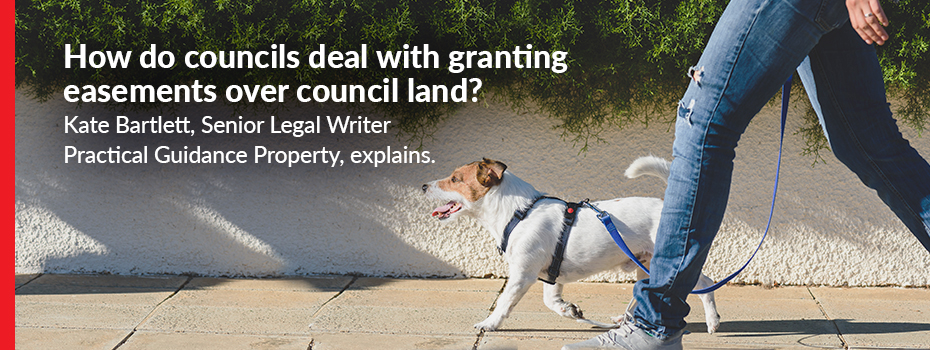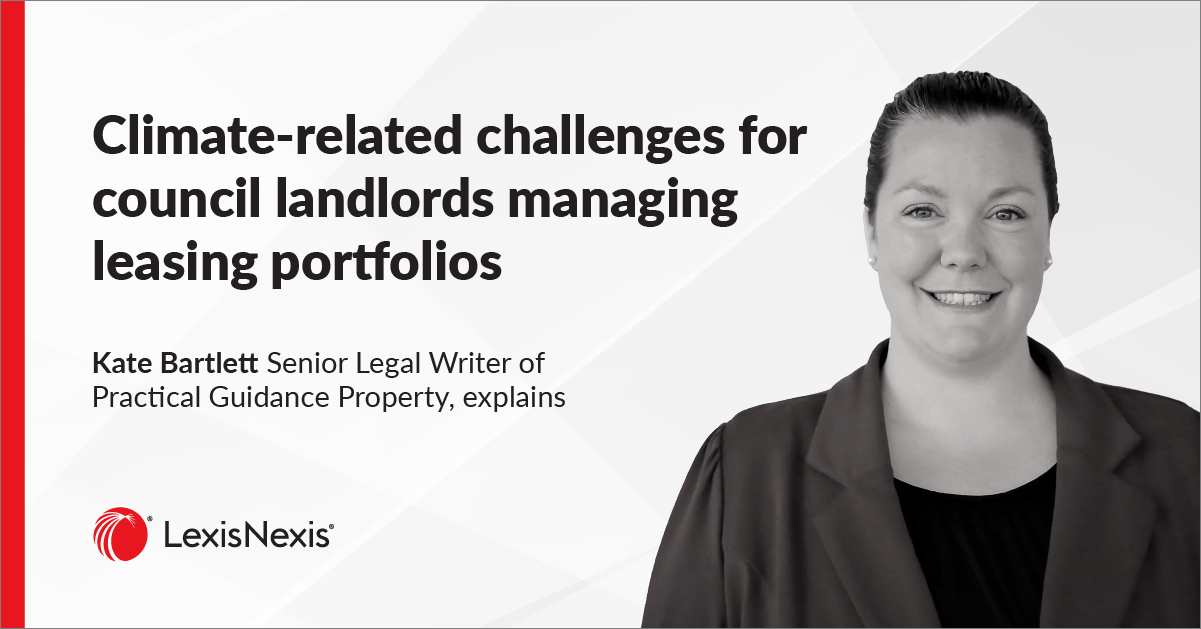
How do councils deal with granting easements over council land?
18 May 2023 01:34
Kate Bartlett, Senior Legal Writer, LexisNexis® Australia, Practical Guidance Property
What is an easement?
An easement is a non-exclusive right to use another person’s land, in perpetuity, for a particular purpose. The perpetuity element is one of the key things which differentiates an easement from other forms of land access rights, such as a lease or a licence.
How is an easement created?
Any landowner can agree to create an easement in favour of another landowner. Councils (and some other statutory authorities) are also able to grant a special category of easement, called an easement in gross, which is an easement in favour of a particular service authority (or, in some cases, the public).
What are the most common types of easements?
Some of the most common easements encountered by councils are service easements (e.g., for water supply, sewerage, drainage, electricity, gas, and telecommunications infrastructure) and carriageway easements. Less often encountered easements include easements of support, air or light.
Service easements on council land
Councils often own tracts of land within or adjacent to new residential land developments or in-fill developments. For a variety of economic and practical reasons, land outside of a development site, particularly land owned by a council, can be an attractive solution for providing services to a new development, particularly in urban areas. Sometimes, it presents the shortest route to connecting existing services to a new development, and this can be the key to achieving a higher yield of developable land on the development site. This makes the grant of an easement a valuable right (which involves the disposal of an interest in the council land) and granting such a right to a third party is something which a council ought (in many cases) to be compensated for.
Council’s agreement to grant a service easement over council land
Council’s approval, as the owner of the council land over which an easement is to be granted to a third party, is a necessary and critical step. It is also an often-overlooked step; sometimes treated as a mere formality, with the grant, creation and registration of the easement to be attended to only after the developer has already procured the planning/development/works approvals for the development from the council (and/or other planning authorities) and usually numerous the service authorities. However, a council’s approval as a landowner to the grant of an easement over its land is a separate and distinct approval from a planning/development approval given by the council.[1]
Registering easements on title
The terms of an easement are usually set out in an instrument that is to be registered on the title to the land which is burdened by the easement. That instrument can be in a prescribed form (e.g., where a land titles office requires a specific form to be created and signed–nowadays, in paper or electronic form–in order to be registered on title), or a regular deed, signed between the owner of the land to be burdened by the easement and the owner of the land to be benefitted by the easement.
Easements are also often created by being shown and described on plans of subdivision and, for many service easements, the rights and responsibilities of the beneficiaries/users of the easements created on plans of subdivision are often set out in state-based legislation or regulations.[2]
With the advent of e‑conveyancing, the involvement of a lawyer is also often necessary to create, sign and register the easement on the title on behalf of the council.
[1] For example, in Victoria, a planning permit required for a staged residential development may be granted by the council and include a requirement for the developer to procure any necessary easements for any water supply, sewerage and other services for the development, where those services are not located on land owned by the developer. The grant of the planning permit is a statutory approval for the development to occur and is given and required under the Planning and Environment Act 1987 (Vic). Any approval by the council for a service easement to be located on land owned already by the council (e.g., municipal reserve land previously vested in the council) is a separate and additional approval required. The creation and registration of title of an easement under either the Transfer of Land Act 1958 (Vic) or the Subdivision Act 1988 (Vic) is also a separate and distinct statutory process, which involves the disposal of an interest in land, and which will, in most cases, require different and additional internal consents and approvals by the council itself or by the officers holding the applicable delegated power from the council. For these reasons, the council’s property/assets teams ought to be involved early in the process of seeking the council’s consent, as landowner, to the grant of any service easement over the council’s land.
[2] Eg, see Part 4 of the Water (General) Regulations 2021 (VIC) (for easements for pipeline and ancillary purposes, drainage, carriageway and waterway management) and section 72(3) and the Twelfth Schedule of the Transfer of Land Act 1958 (VIC) (for easements of carriageway).
Practical Guidance Property
LexisNexis Practical Guidance - Property provides:
- Guidance on how easements can be created and registered on title, and varied and removed from title, in all Australian jurisdictions.
- Guidance and links to the necessary land registry instruments to be prepared and signed when registering an easement on the title and provides precedents agreements to use when agreeing to allow land to be burdened by an easement or for land to be released from the burden of an easement.
Whether a council deals internally with service easements or appoints a lawyer to act for it in creating, signing and registering easements on the title, having access to LexisNexis Practical Guidance - Property gives council officers insight into what will be involved from the outset and will assist officers to brief any lawyer to act for the council. For more information, see the Encumbrances topic on LexisNexis Practical Guidance - Property.
Related Articles
-
 Managing a large and varied leasing portfolio can be challenging for any landlord.
Managing a large and varied leasing portfolio can be challenging for any landlord. -
 Climate change will continue to present challenges for council landlords in how they manage their leasing portfolios.
Climate change will continue to present challenges for council landlords in how they manage their leasing portfolios. -
 Those faced with leading organisations in current volatile environments clearly encounter significant challenges. Effective leaders are those who have the skills to make good decisions in an ambiguous environment, develop opportunities through innovation to gain a competitive advantage. They are highly valuable to organisations.
Those faced with leading organisations in current volatile environments clearly encounter significant challenges. Effective leaders are those who have the skills to make good decisions in an ambiguous environment, develop opportunities through innovation to gain a competitive advantage. They are highly valuable to organisations.
Practical Guidance
Your one-stop solution for accurate legal answers from Australian legal experts. Tools, practically focused guidance notes, checklists, precedents, and training materials support and streamline your legal workflow.
LEARN MORE LexisNexis
LexisNexis